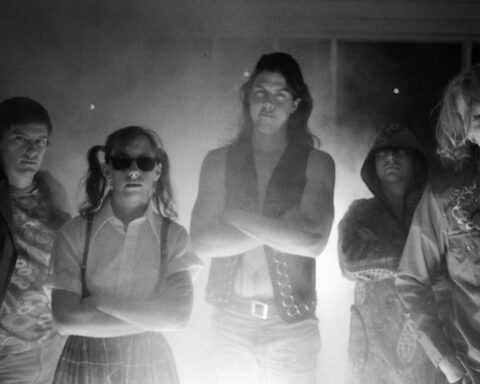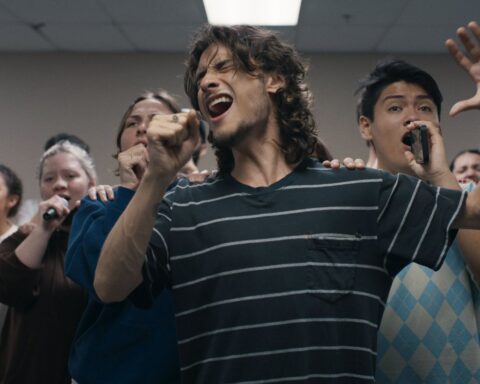Beats of the Antonov
(Sudan/South Africa, 65 min.)
Dir. Hajooj Kuka
Programme: TIFF Docs (World Premiere)
The concept of national cinema is out of fashion these days. That concept has become as old-fashioned as the auteur theory as transnational and world cinema have become hotter commodities and buzzwords for capturing the currents of contemporary film. There is still value, however, in using films to explore and to articulate national consciousness, especially when the fluidity and intangibility of such an identity—or perhaps its impossibility—forms the core of a film. Hajooj Kuka’s impressive documentary Beats of the Antonov looks at Sudan in a time of flux, chronicling the tensions between the villagers in the regions of the Blue Nile and Nuba mountains and the rebels in the outlying areas.
Beats of the Antonov sets the story to two very different beats. The titular beats of the title comes from the bombs dropped by Russian-made Antonov planes helmed by the Sudanese government. These bombs mean to annihilate the militia, but they target and devastate the villagers with equal measure. The film opens with a bombing scene that is jarring, not merely for the rocky force of the impact that shakes the frame, but for the chorus of villagers who emerge from their shelters after the bomb drops and unite in a collective chorus of healing and dance.
Some of the best insight comes from Sarah Abunama-Elgadi, a Sudanese ethnomusicologist who studies the music of the villagers and situates their rhythms in a larger academic discourse. “Everyone has the right to play their own music,” she notes, stressing that the assortment of sounds forms a greater harmony. Beats of the Antonov takes the hybridity of the music of the villagers as a microcosm for a larger cultural debate of national consciousness. This immersive film ultimately forges a counter-narrative of endurance and survival as the villagers keep culture alive through art.
“If we don’t answer the question of Sudanese identity,” says one of the intellectuals whom Kuka includes in the discussion, “then the war will continue.” The villagers echo this sentiment, for they insist on the endurance of a dual Arabic-African identity, whereas the majority oppresses blackness in an overwhelmingly predominant black culture. Some villagers express a submission to the placement of Arabic culture over a black identity, for one interviewee demonstrates a costly process by which she lightens her skin to erase a part of herself. Alternatively, other villagers insist on singing in the local tribal language, while others use its name, Rutana, as a pejorative.
Kuka lets the villagers tell their stories using their own songs, words, dances, and rhythms. Beats of the Antonov shows the celebration of culture as the defiant assertion for diversity in the face of oppression. The film cuts a multiplicity of voices—villagers, militia, academics, and more—together in a steady chorus. The range of voices, languages, and beats shows the fallacy of imposing one majority culture by force. The music itself is beautiful, though—the film has a great soundtrack—and the delight one receives in hearing the music lets the tunes subtly note the richness that the diversity of cultures brings to the world.
Beats of the Antonov screens:
Friday, Sept. 5 at 7:15 pm at TIFF Bell Lightbox 4
Sunday, Sept. 7 at 12:45 pm Scotiabank 9
Thursday, Sept. 11 at 9:45 pm at AGO Jackman Hall











